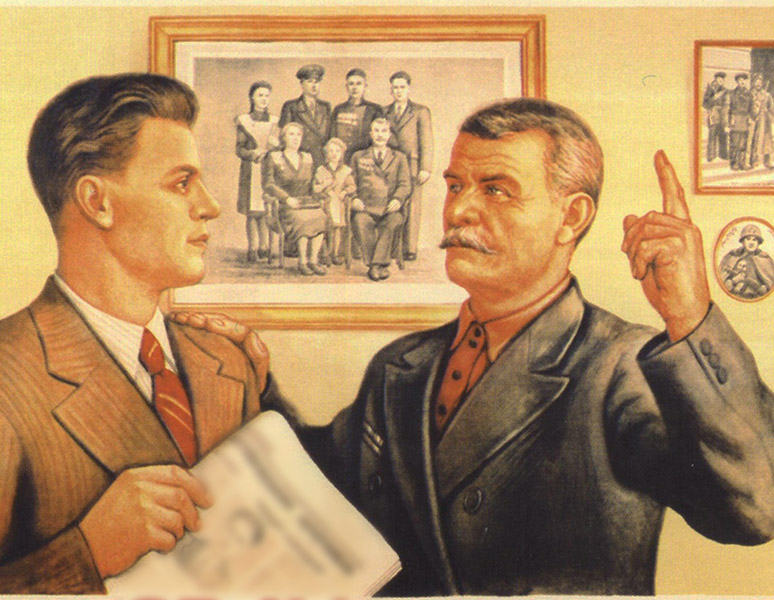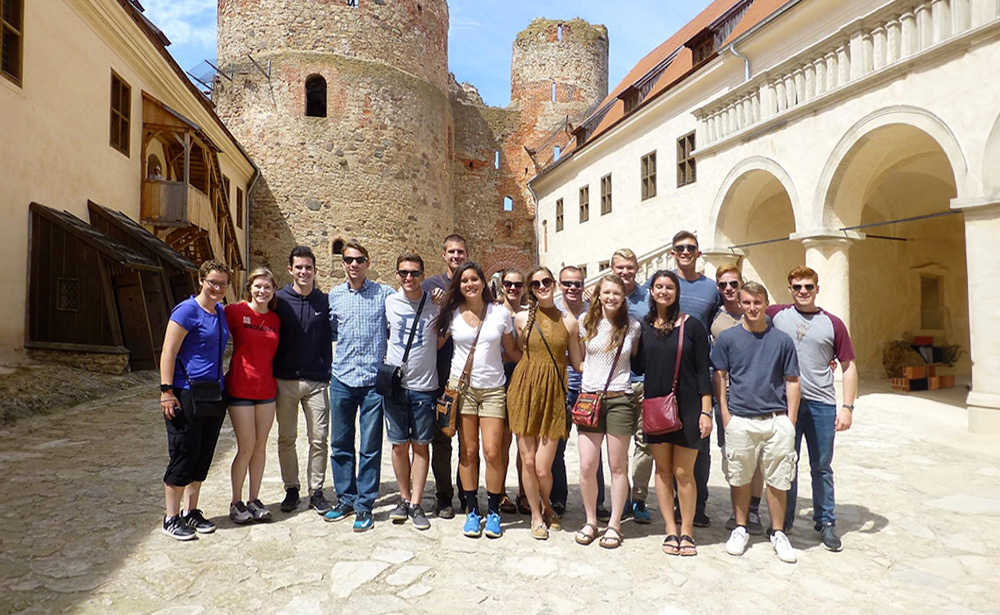Soviet Posters. Part 1: Society and Politics
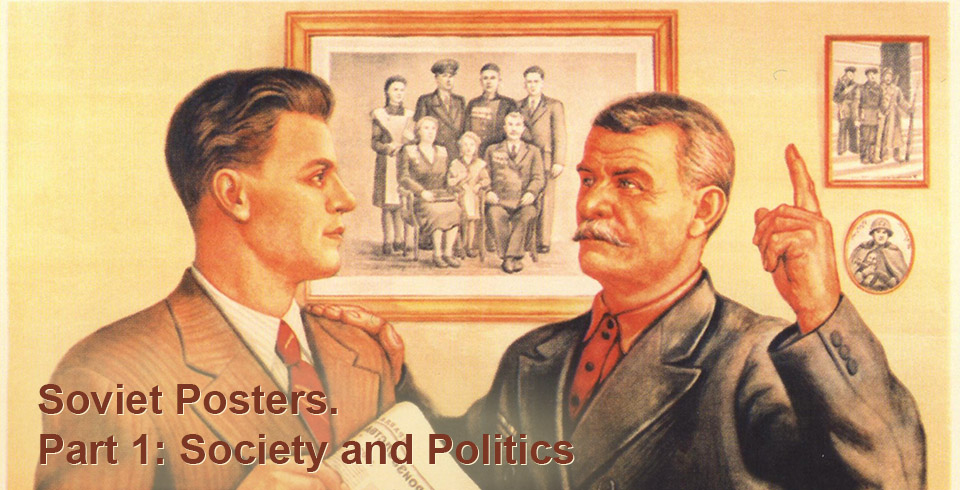
Visual propaganda was an integral part of every Soviet citizen’s life. Soviet people come across the visual propaganda in the street, at work, or while visiting leisure areas or going shopping. The Soviet poster genre can definitely be identified as a separate trend within social realism. Professional artists (sometimes even world-known artists) created posters, and slogans were often written by prominent writers and poets. Looking at posters from different periods of times, it is possible to make conclusions about the USSR home and foreign policy, and about some events in the world.
Nevertheless, since posters were created to be used only on the USSR territory, almost everything that had been created by Soviet poster artists remained unknown to the world audience. However, many posters are of great artistic value. We have tried to select the most interesting and featuring posters to show to our readers.
Posters from the 20s and 30s
These were extremely turbulent years: at the beginning of this period, the Red Army was fighting against the White Opposition and Poland. At the end of the 20s Stalin took over the power, industrialization began, crucial changes happened within the society.
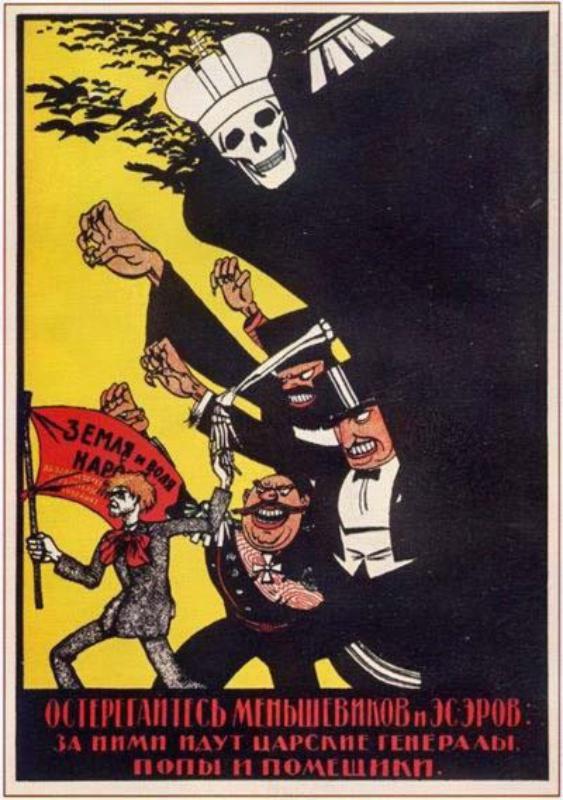
The poster with the call to arms against the Bolshevism enemies.
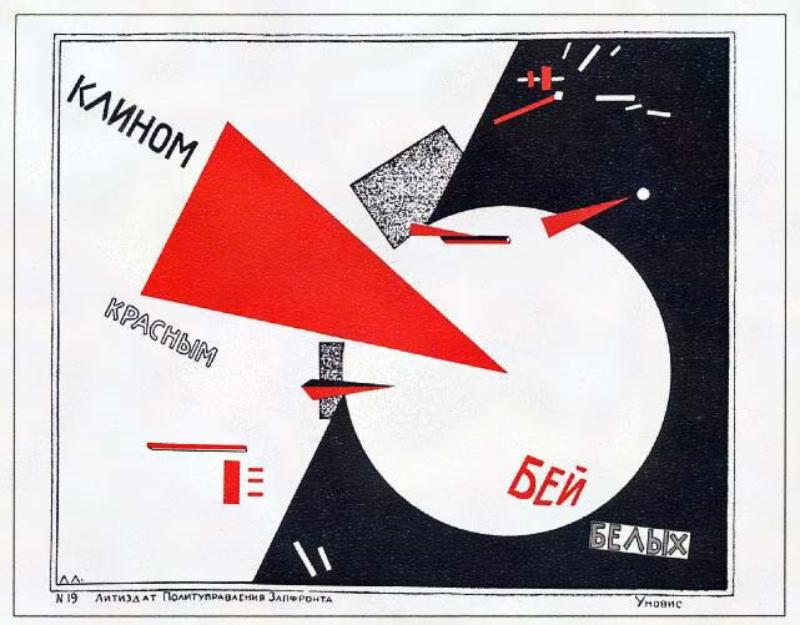
“Beat the Whites with the Red Wedge”- the call to fight against the White Opposition. The poster was painted by artist Lazar Lissitzky –one of the founders of supermatism.
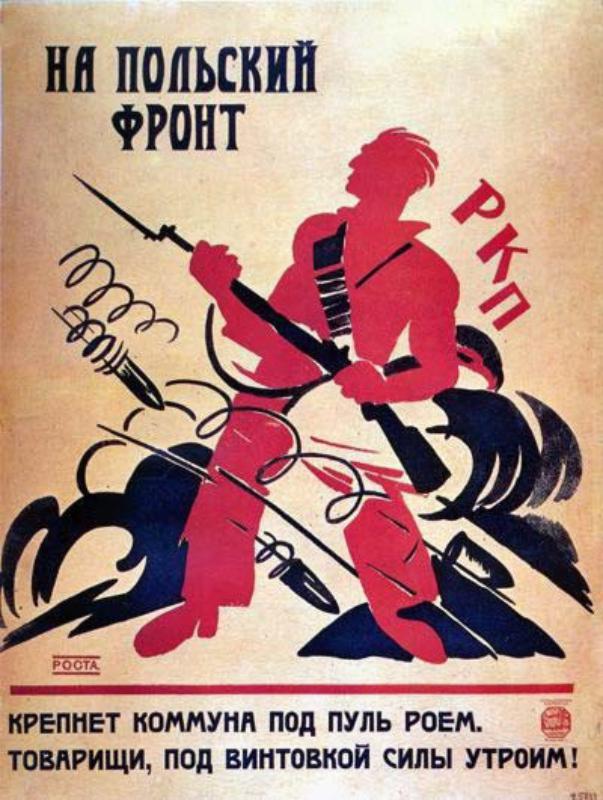
The slogan calls to enlist to the war with Poland
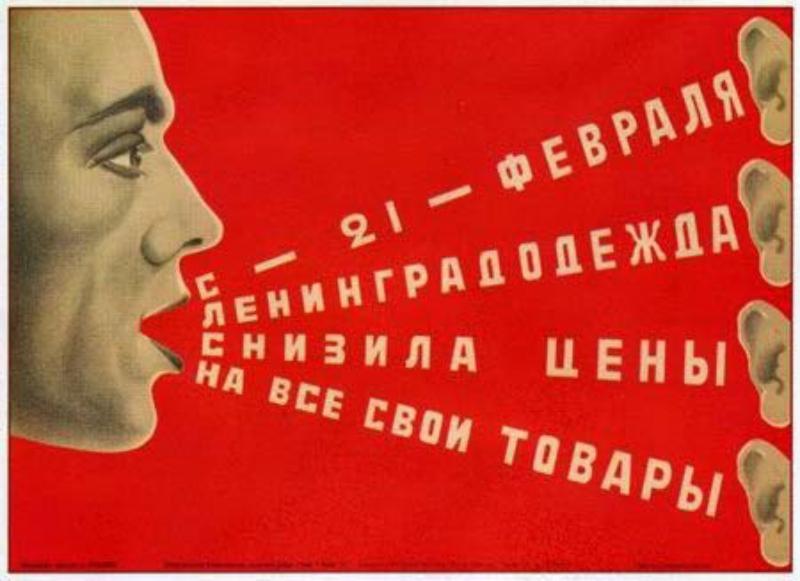
The advertisement that informs about the discounts on clothes since February 21.

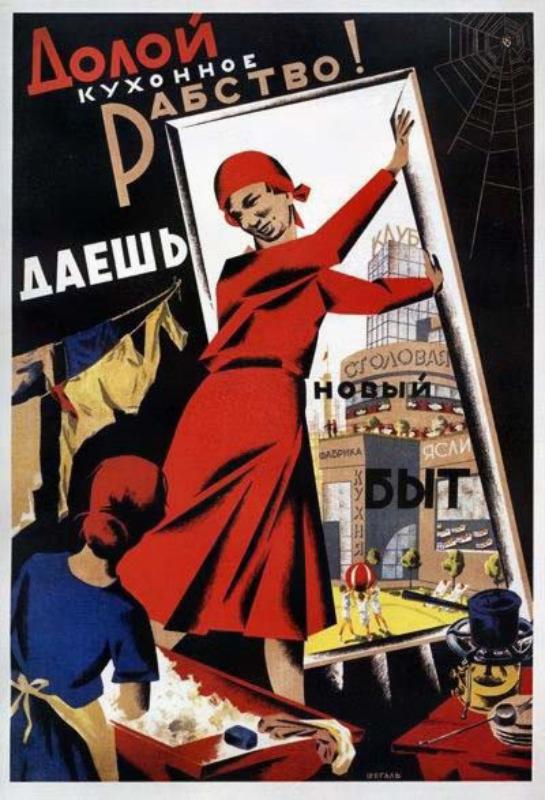
The Soviet government aspired to provide all its citizens with equal rights. The posters call women to give up their “kitchen slavery” and acquire new professions.
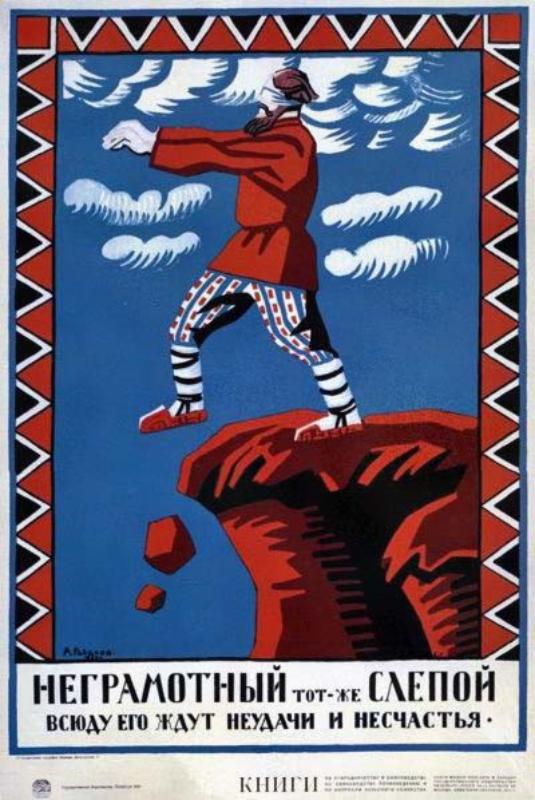
Before the revolution, the level of literacy in Russia had been very low. Having taken over the power, the Communists invested a lot of efforts into people’s education. On the poster, an illiterate man is compared to a blind man who is always in for troubles.
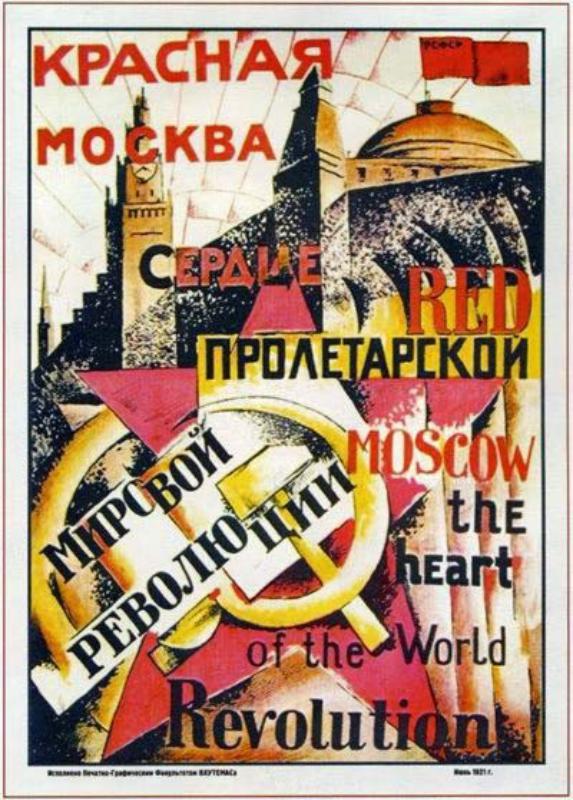
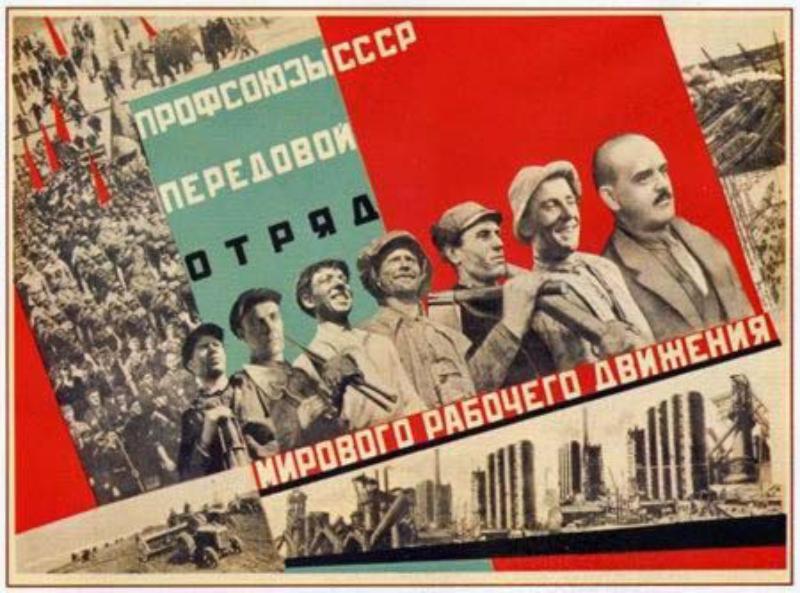
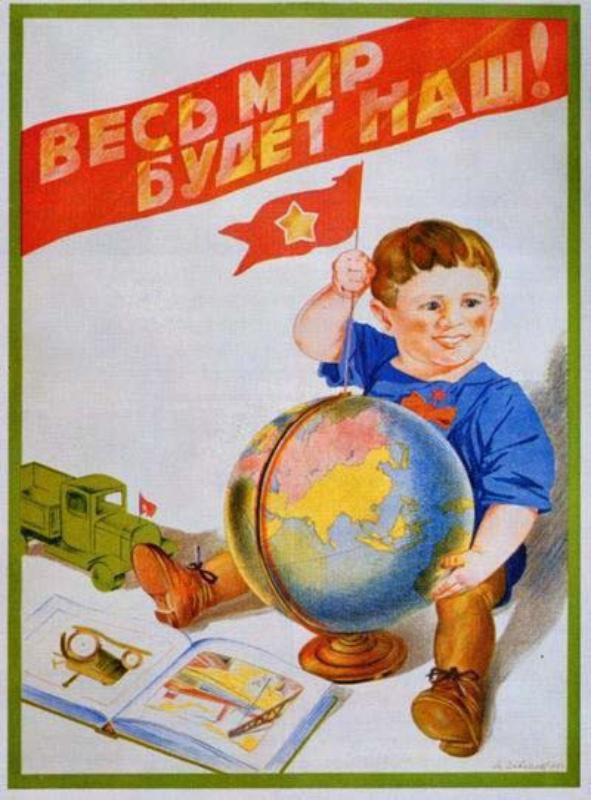
At the beginning of the 20th century, the Communist Party was still having designs on the World Revolution and the Party was getting its people ready for it. The posters proclaim Moscow “the capital of the World Revolution”, Soviet trade unions “advanced units of the World Labour movement”, and they say that “the whole world is going to be ours!”.
Since about the mid-20s the Stalin’s cult developed. However, there were not many posters devoted to him at that time, and he was not always the main character on posters yet.
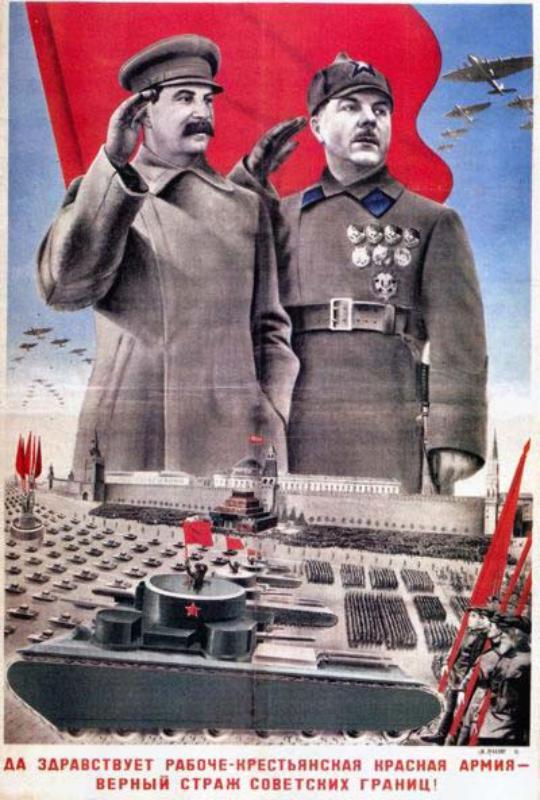
The slogan on the poster glorifies the Red Army. This is one of the first posters that includes both a photograph and a painting.
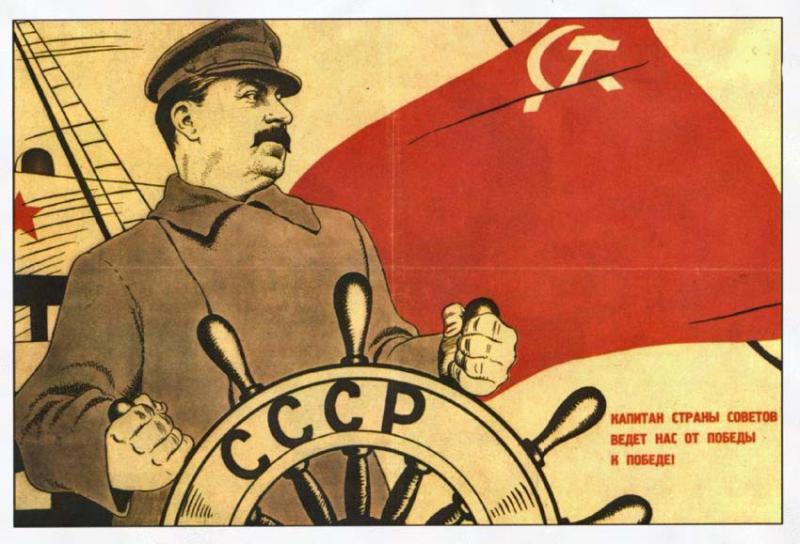
One of the first posters with the picture of Stalin. Stalin is referred to as “a captain who leads the country from one victory to another”.
The Stalin Epoch
The main topics of the Stalin Era posters – glorifying the leader of the state, industrialization, development of agriculture and propaganda during World War II.

“Stalin is Taking Care of Each of Us from the Kremlin”
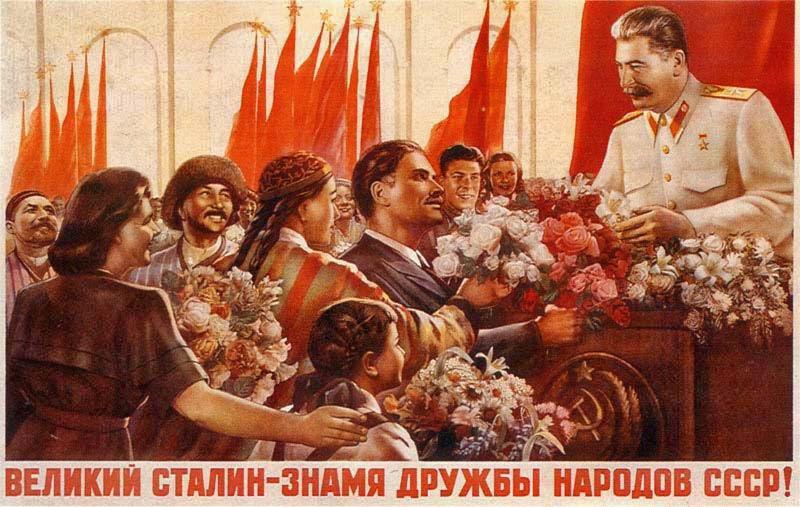
Stalin is called a symbol of “friendship of peoples” that is one of the basic ideological principles of the Soviet Union, on the basis of which the united nation of “Soviet people” should be formed, neglecting national or religious identities.
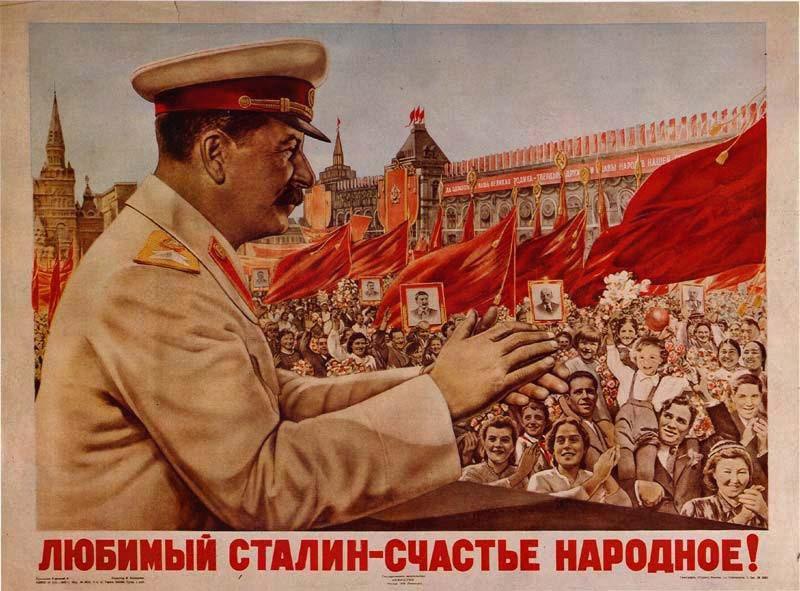
“Beloved Stalin is the People’s Happiness”
The 1930s was a period of industrialization and development of agriculture. These events were reflected on Soviet posters.

“The Building of Socialism”
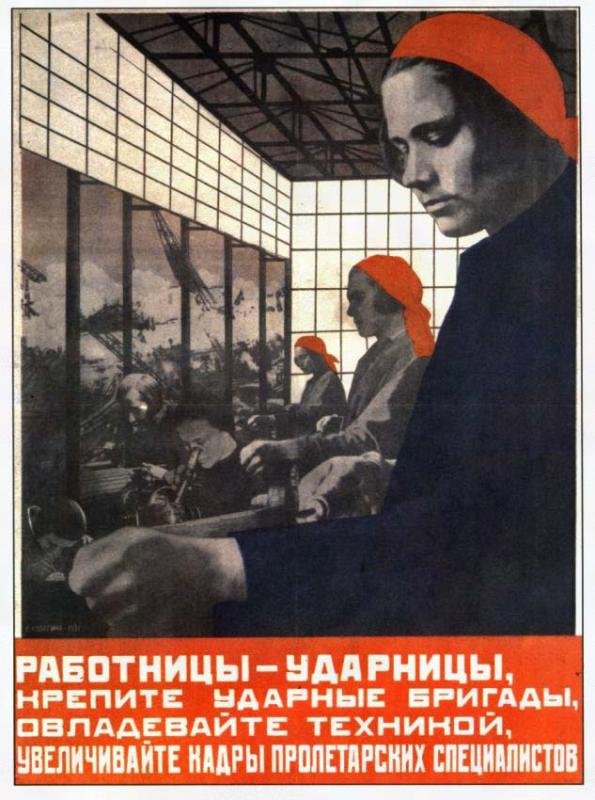
The poster calls on women working at factories to improve their qualifications and to master new equipment.
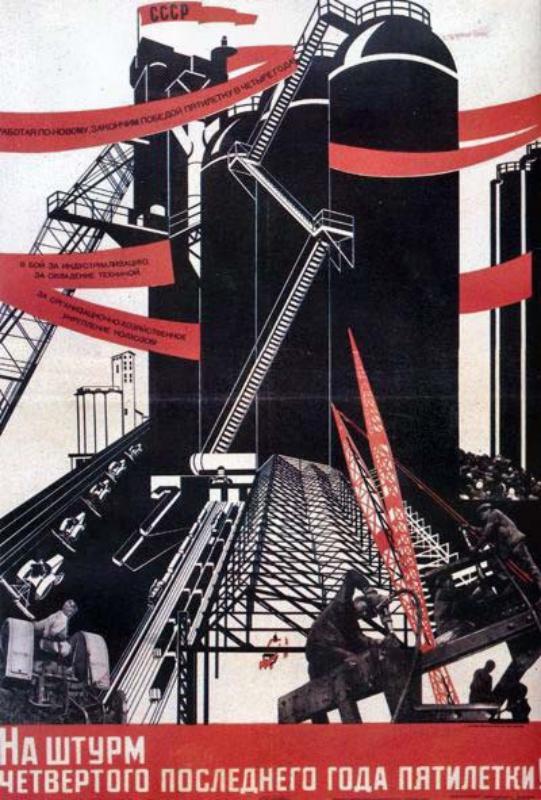
The call to complete the state’s five-year plan of development in four years.
With the beginning of the Stalin’s rule, the state was developing in “Five-Year Plans”. There was a development plan for five years. After its completion, the next five-year plan was adopted and so on. Such practice existed until 1991.
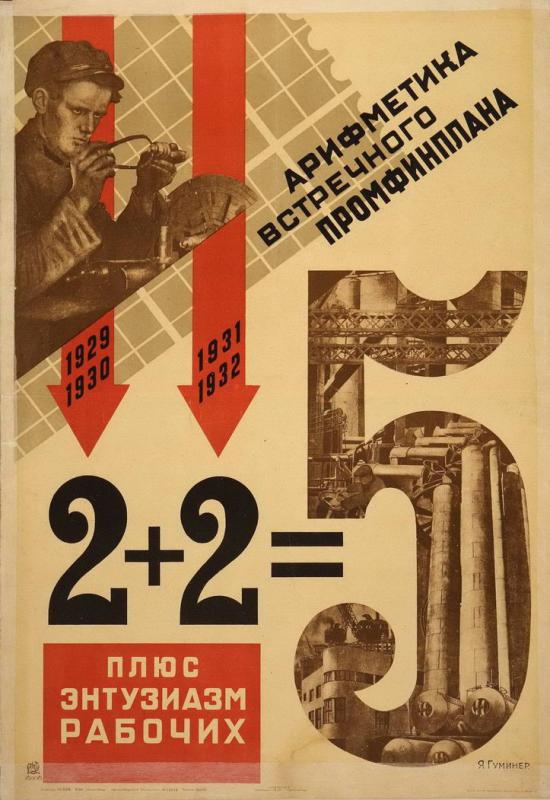
One more poster calling on to accelerate the completion of a five-year plan.
By the way, George Orwell borrowed the slogans like these for his dystopian novel “1984”. Using the formula 2+2=5 he vividly showed the policy of “doublethink” that dominated in a totalitarian society.
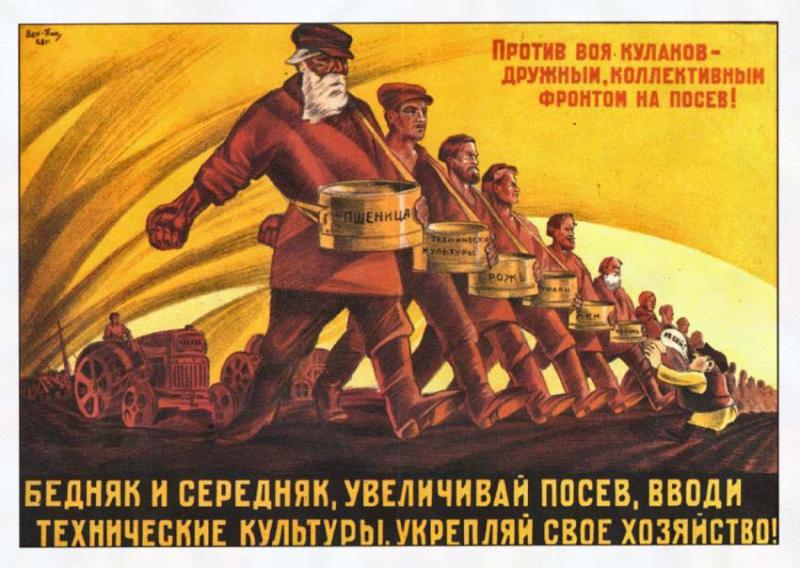
Peasants should increase the amount of crops planted and more actively use modern equipment in agriculture.
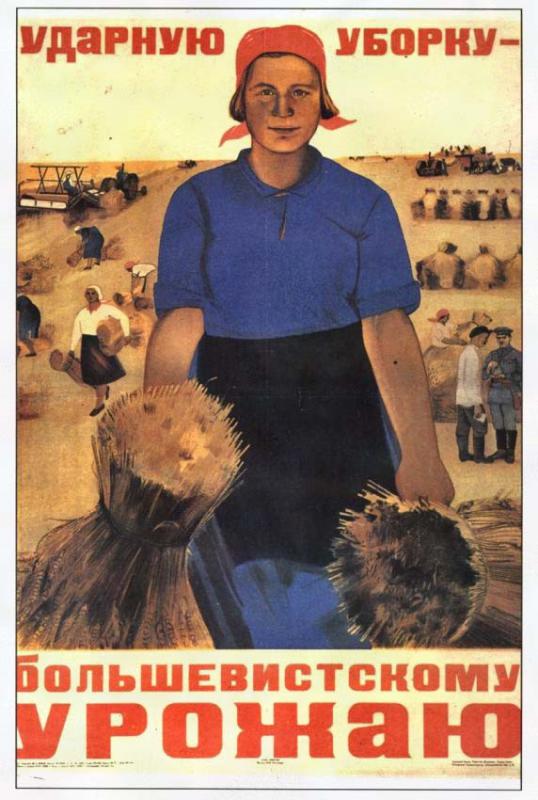
And this poster speaks about harvesting.
In 1941 Germany attacked the USSR. Since then, all Soviet posters were devoted to the fight against the enemy.
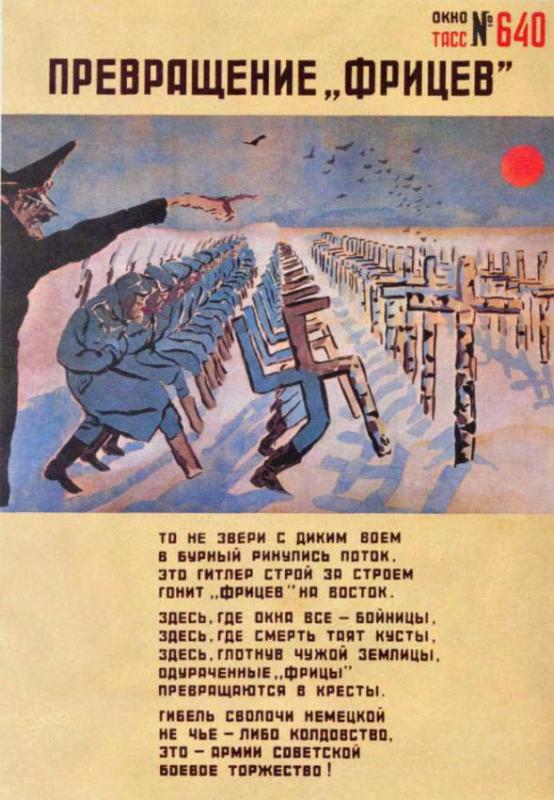
The poster that shows “transformation” of German soldiers.
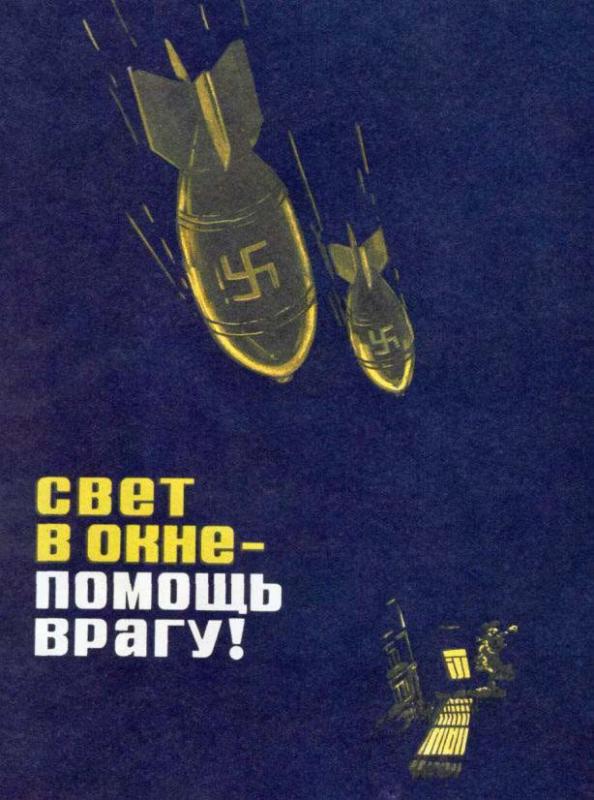
“Light in the Window is Help to the Enemy!” There were blackout rules during the war: at night all lights in houses and transport should be switched off, so that the enemy found it more difficult to identify the bombing targets.
In order to raise the soldiers’ fighting spirit, it was decided to use the images of prominent military leaders from the past.
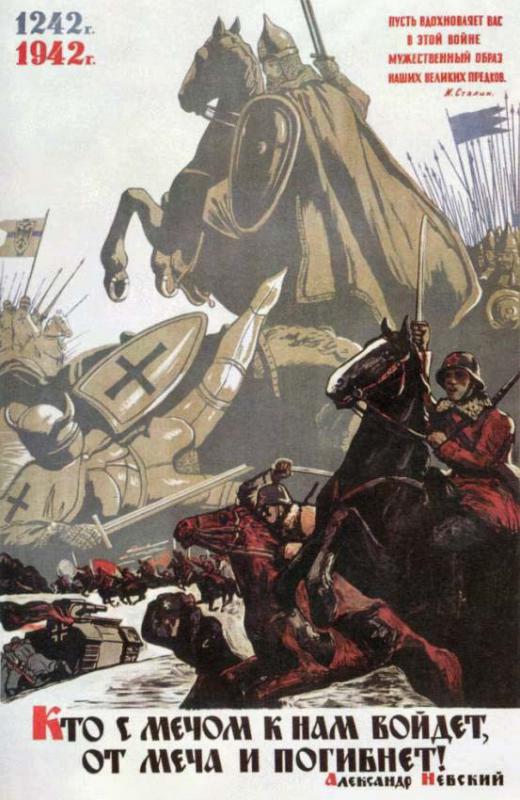
“Whoever will Come to Us with a Sword, from a Sword will Perish”. On the background of the poster, you can see Alexander Nevsky, a Russian prince and military leader during his fight with German knights.
Although the poster attributes this expression to Alexander Nevsky, in fact, it was made up for Sergey Eisenstein’s film “Alexander Nevsky” directed in 1938.
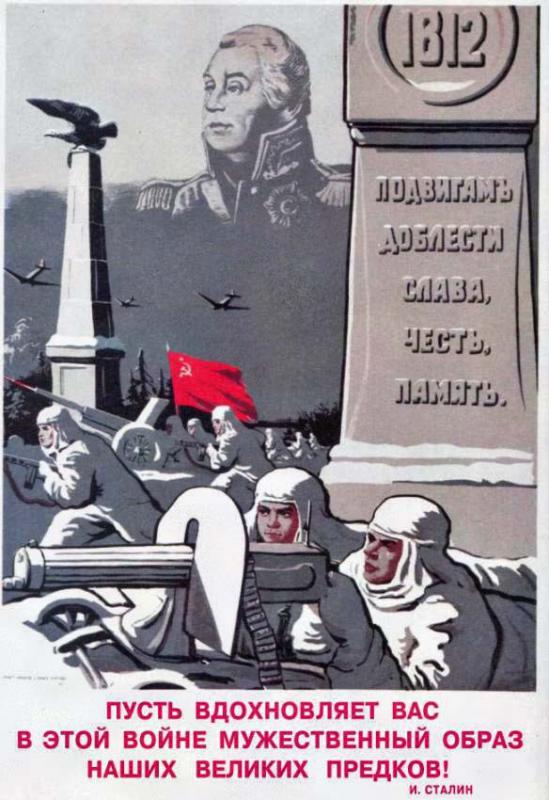
On the background of this poster, you can see Mikhail Kutuzov, a Commander in Chief during the war against Napoleon.
At the bottom of the poster there is a citation from Stalin’s speech during the 1941 Military Parade, which calls on to get inspired by the courage of great ancestors.
Disagreements between the states-allies would appear only after the war. Therefore, now posters reflect the combined fight of Britain, the USSR and the USA against Germany.
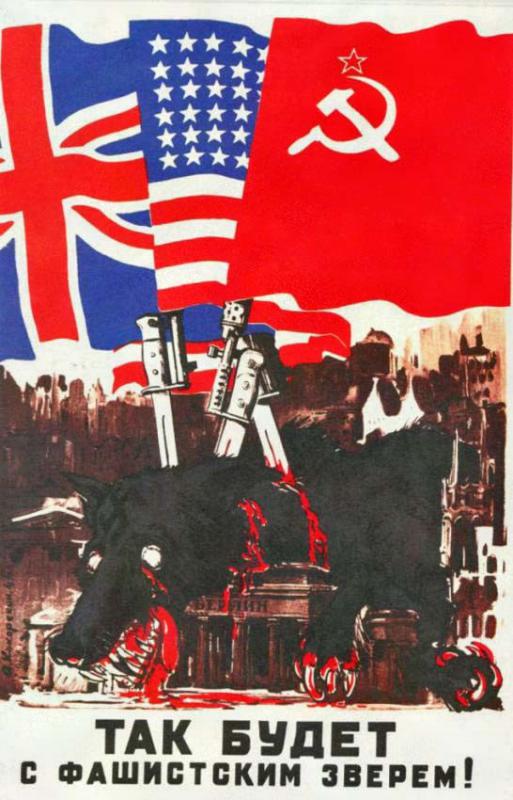
“This is What will Happen to A Fascist Beast!”
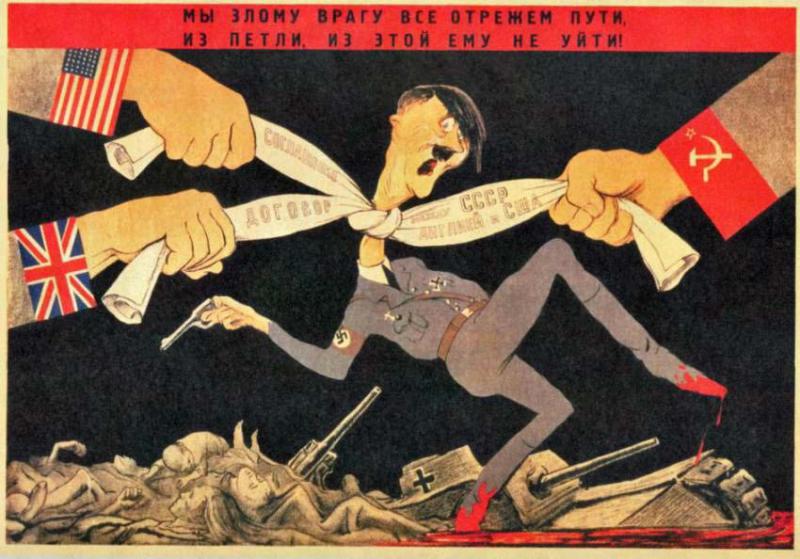
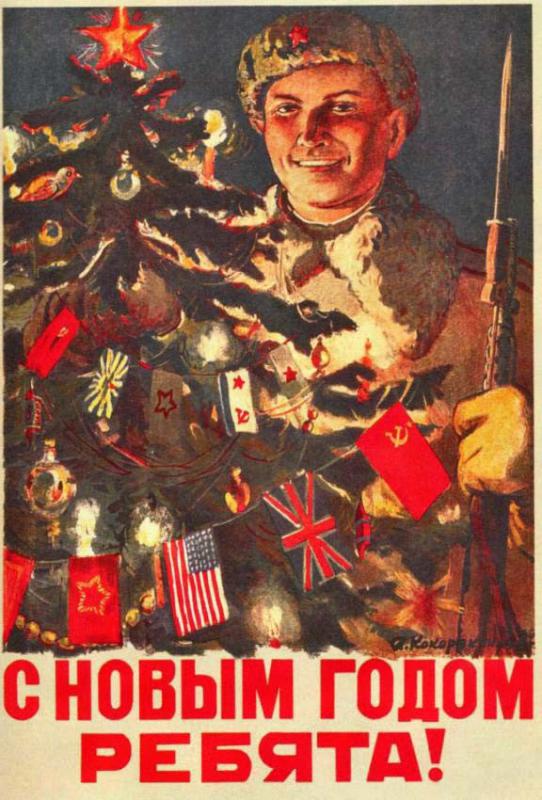
“Happy New Year, Guys!”
Cold War
After the war, the relations between the USSR and western states worsened. Soviet propaganda reacted at this situation. There were lots of anti-American and anti-NATO posters.
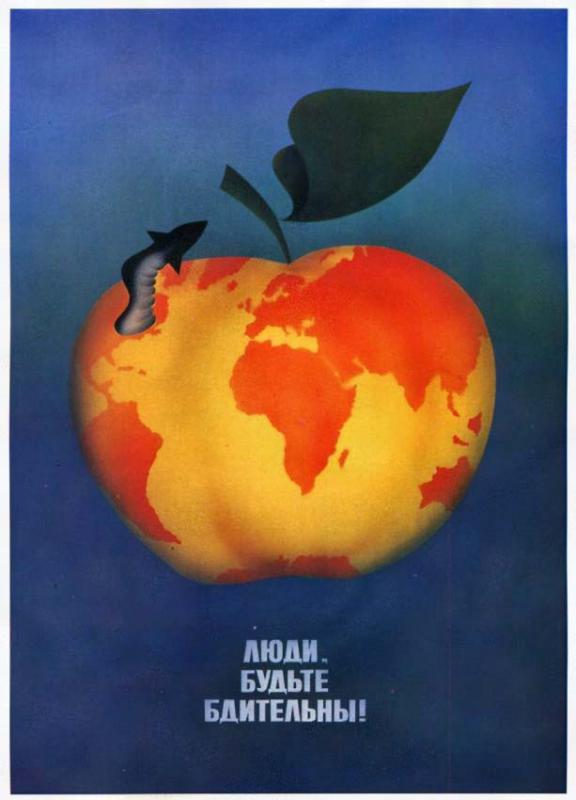
“People, Stay Alert!”
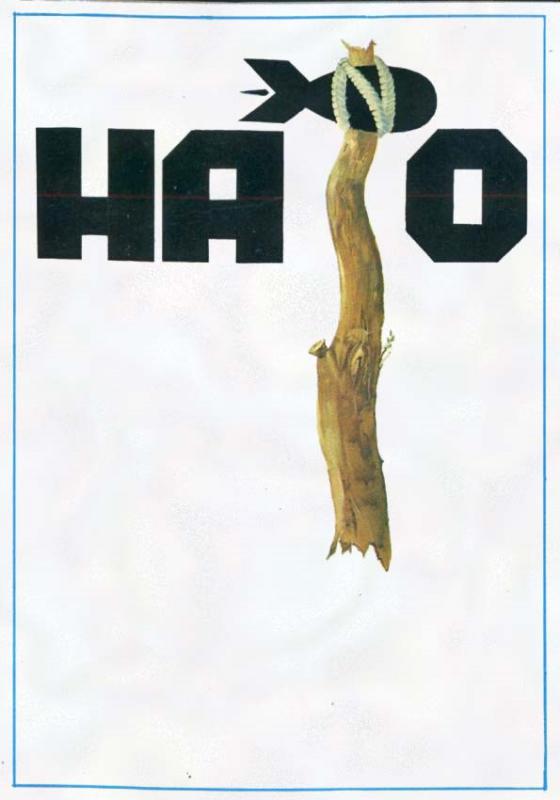
“NATO”
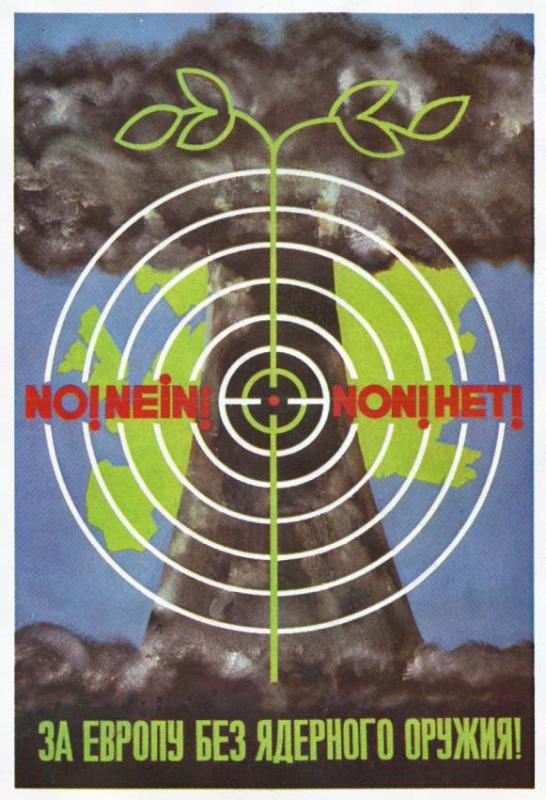
“For Europe without Nuclear Weapon!”
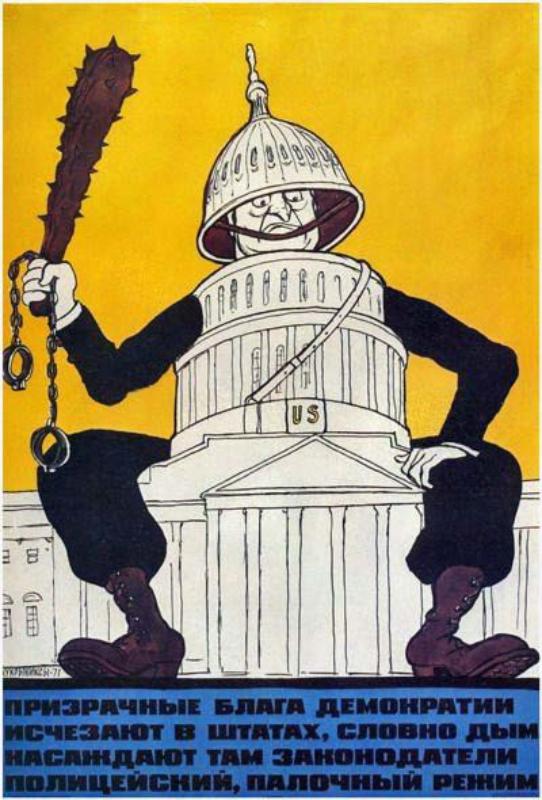
The poster says that democracy in the USA is being replaced with a police regime.
The Brezhnev Times
The Brezhnev era is usually referred to as “stagnation” in the Russian historiography. After the Caribbean crisis, both parties realized the threat of possible war, and the military rhetoric diminished. The price for oil, which the USSR was selling successfully, increased. The flow of money to the state allowed exchanging material benefits to people’s loyalty. The state punished only those dissidents who purposefully acted against the Soviet regime. As a result, the Communist propaganda disappeared from posters. Almost all attention was paid to social issues, the increase of labour quality and workers’ enthusiasm.
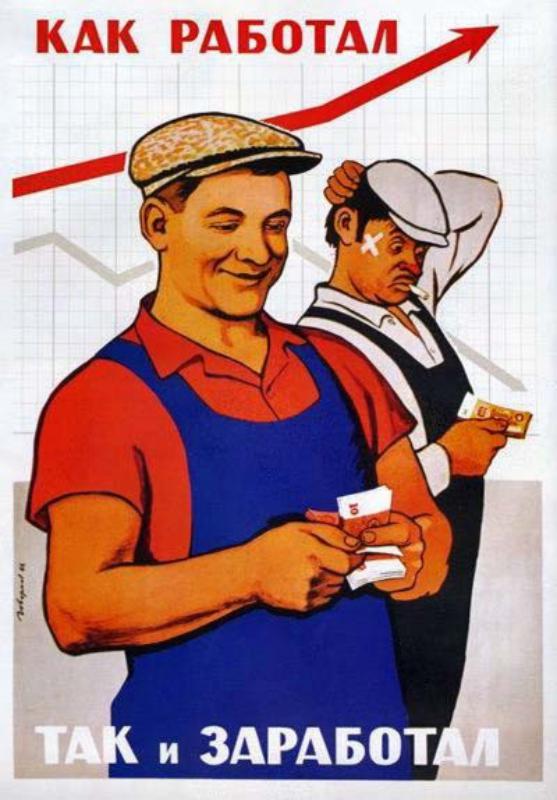
“You Earned As Much As You Worked”
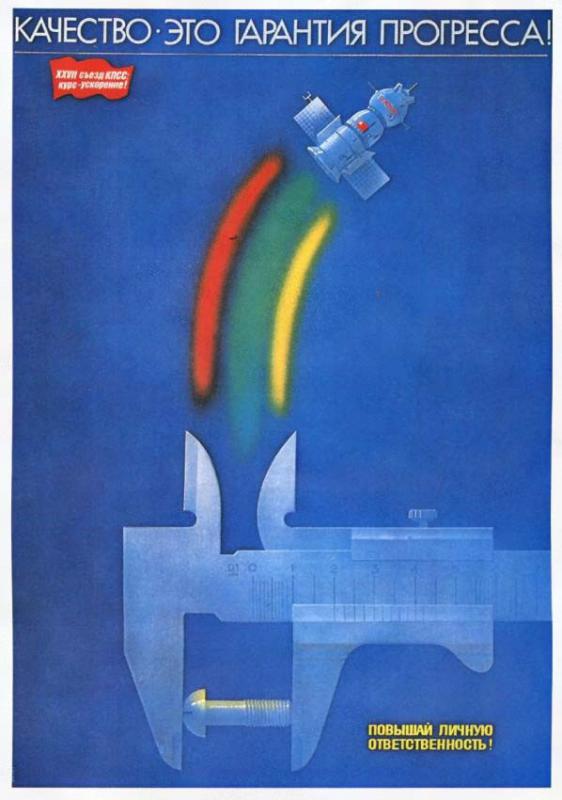
“Quality is the Condition for Progress!”, “Increase You Personal Responsibility!”
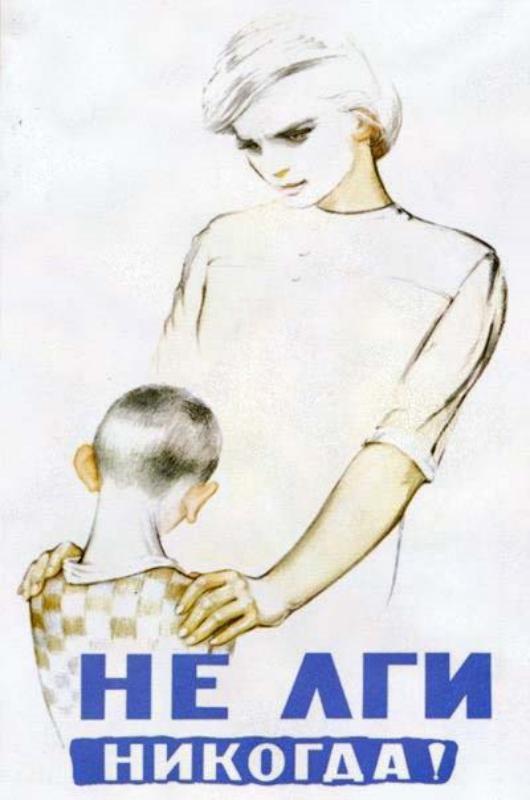
“Never Lie!”
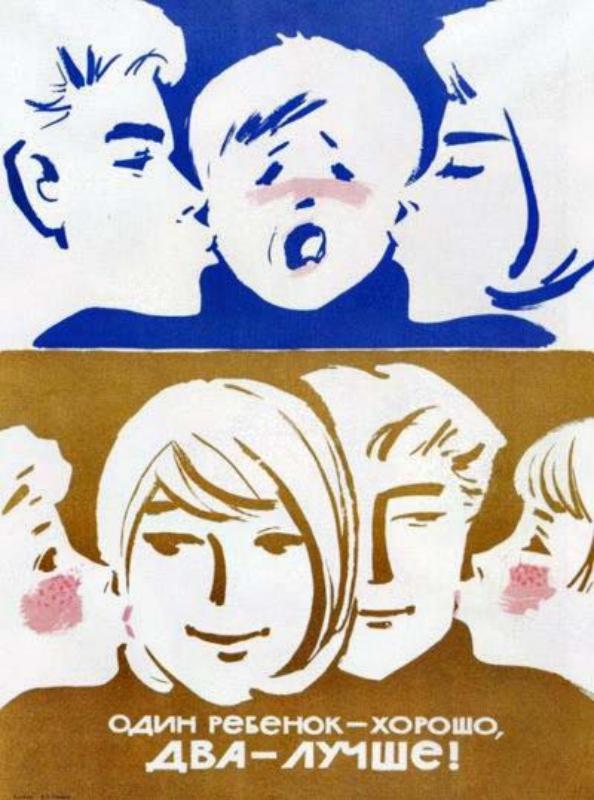
“One Child is Good, but Two is Better!”

“Crèche is the Right Place for a Baby, but Not Tundra”
There were a lot of so-called ”small peoples” in the USSR. They did not want to abandon their regions of residence where their ancestors had been living for centuries. They also continued to live lives typical to their culture and traditions. The Soviet authorities used various means of propaganda, including posters, to call on them to join the Soviet society.
During the Brezhnev era, the topic of space became very popular. The well-known programme “Soyuz-Apollo” within the frame of which the first space link between Soviet and American spacecraft happened during this time.
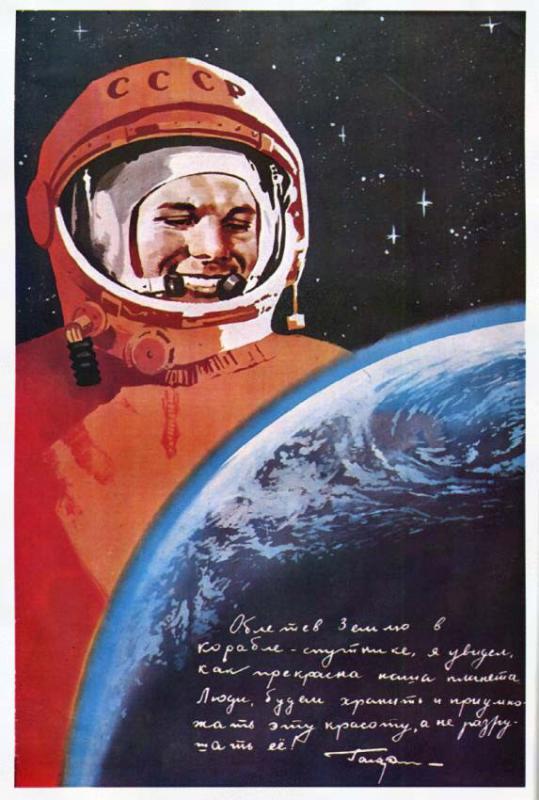
“Orbiting Earth in the spaceship, I saw how beautiful our planet is. People, let us preserve and increase this beauty, not destroy it!” – Yuri Gagarin.
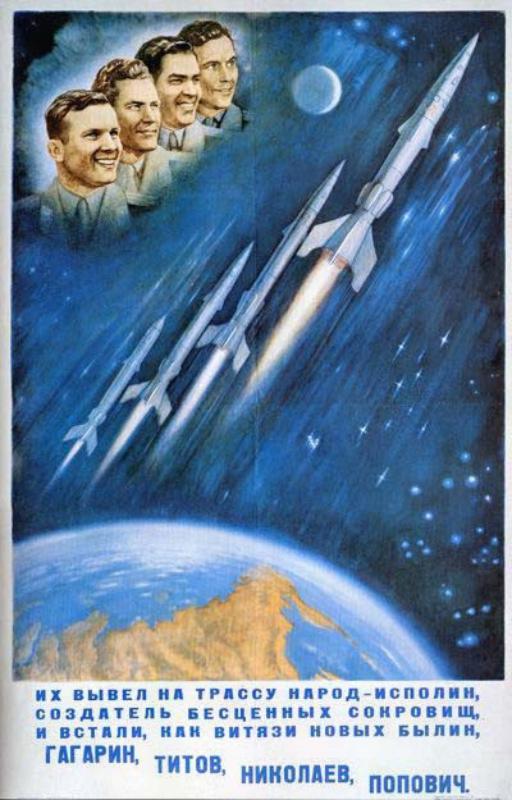
On the poster Soviet cosmonauts Yuri Gagarin, German Titov, Anriyan Nikolayev and Pavel Popovich are compared to the heroes of the Russian epos.
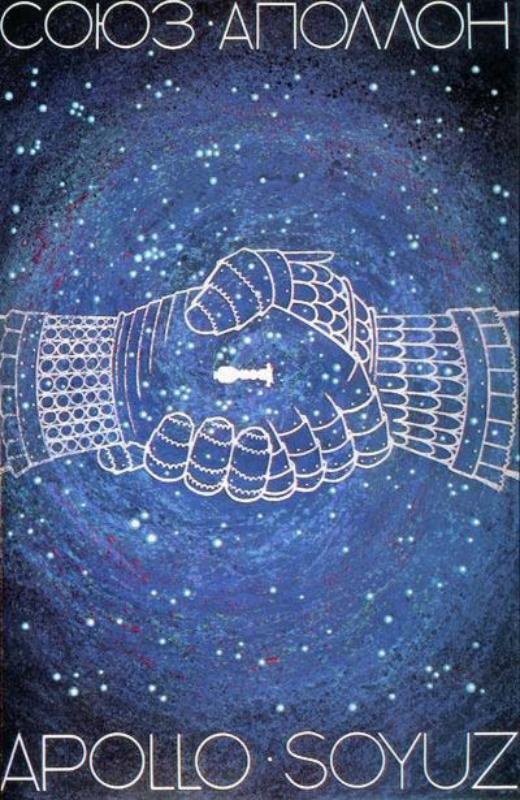
The poster devoted to the Soyuzs – Apollo flight, which is also known as “the handshake in the space”.
Perestroika
Perestoika is one of the most ambiguous periods in the Soviet history. The General Secretary Mikhail Gorbachev tried to build a new policy in relations between the state’s government and people – Glasnost (publicity). This word as well as the word Perestroika entered the science of history and political science. During the last years of its existence, the USSR experienced severe economic problems. As a result, there was huge corruption and shadow economy in the state. One of the ways the authorities tried to combat them were posters.

On the poster in formation, there are people that impersonate the main, in the artists’ opinion, problems that impede the implementation of Perestroika policy: bureaucracy, incompetence, bribery, voluntarism, etc.
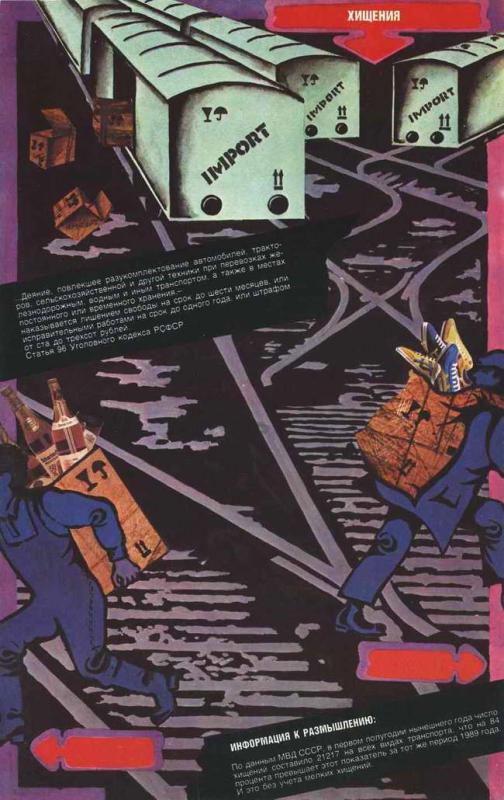
On the poster there is an excerpt from the USSR Criminal Code that informs about a severe punishment for the theft of state property, and the statistics of theft. The number of theft increased by 84% as compared to the previous year.
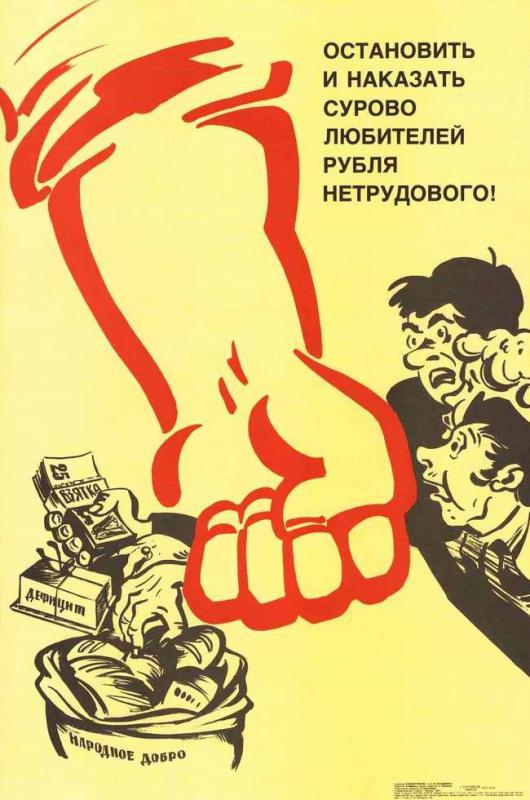
The poster with the slogan to punish people who earn money by crooked means.
The Perestroika period is considered to be the end of the poster art in the USSR. Specialists noted that posters artistic value diminished as well as their influence on people who got tired of propaganda. However, at that time independent postmodern artists, the representatives of Socialist Art, started to deal with poster art exploiting Soviet propaganda clichés.
Join our newsletter so not to miss the second part of the article that will deal with the topic of labour safety.
You may be interested
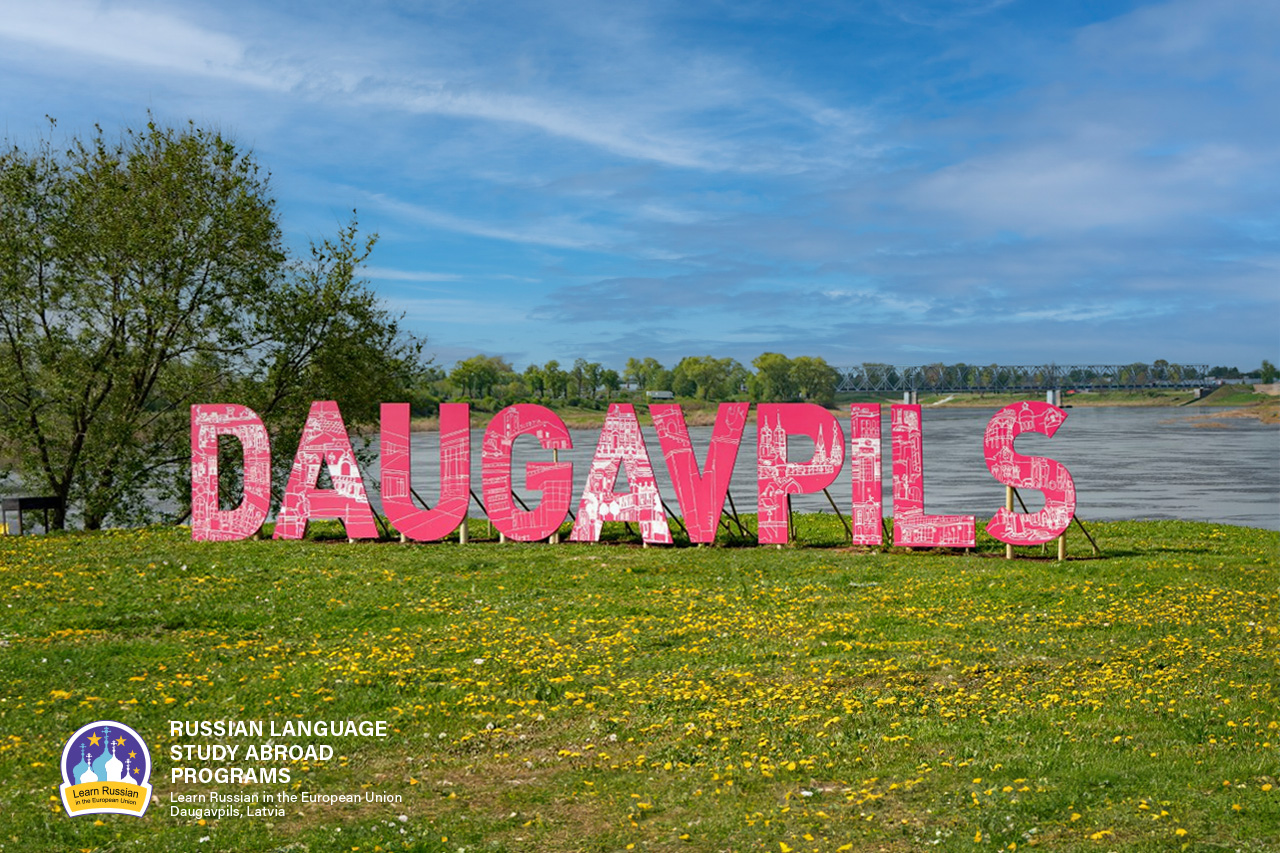
Why do people speak Russian in Daugavpils?
As it seems to us, Daugavpils is the best place to learn Russian now, because our city is situated in the EU and NATO, but at the same time 90% of the city’s population speak Russian at home.

ЭТЮД О ДВИНСКЕ
Etude on Dvinsk by F.Fedorov
The Baltic region is one of the most catastrophe prone regions of the 2nd millennium, especially its second part; it is the centre of attraction of ‘geopolitical’ interests of the European world. Probably the most tragic fate has befallen to the eastern part of the present Latvia and its multi-titled town of Dinaburg – Dvinsk – Daugavpils. During its 730 years long history, the town went through five rather autonomous periods of development, five different lives (German, Polish, Russian, Latvian, Soviet), and at the beginning of the 1990s it entered into the 6th period.
The history of Dinaburg – Dvinsk – Daugavpils is the history of five attempts by the town to begin its life anew; and this is determined not only by the fact that the town was four times burned down and had to start life from scratch, but first and foremost because each of these periods was characterized by a total change of ethnos and the socio-cultural field.
The present article deals with the cultural space of the town in one of the most efficient periods of its development – from the 1860s till World War I.


